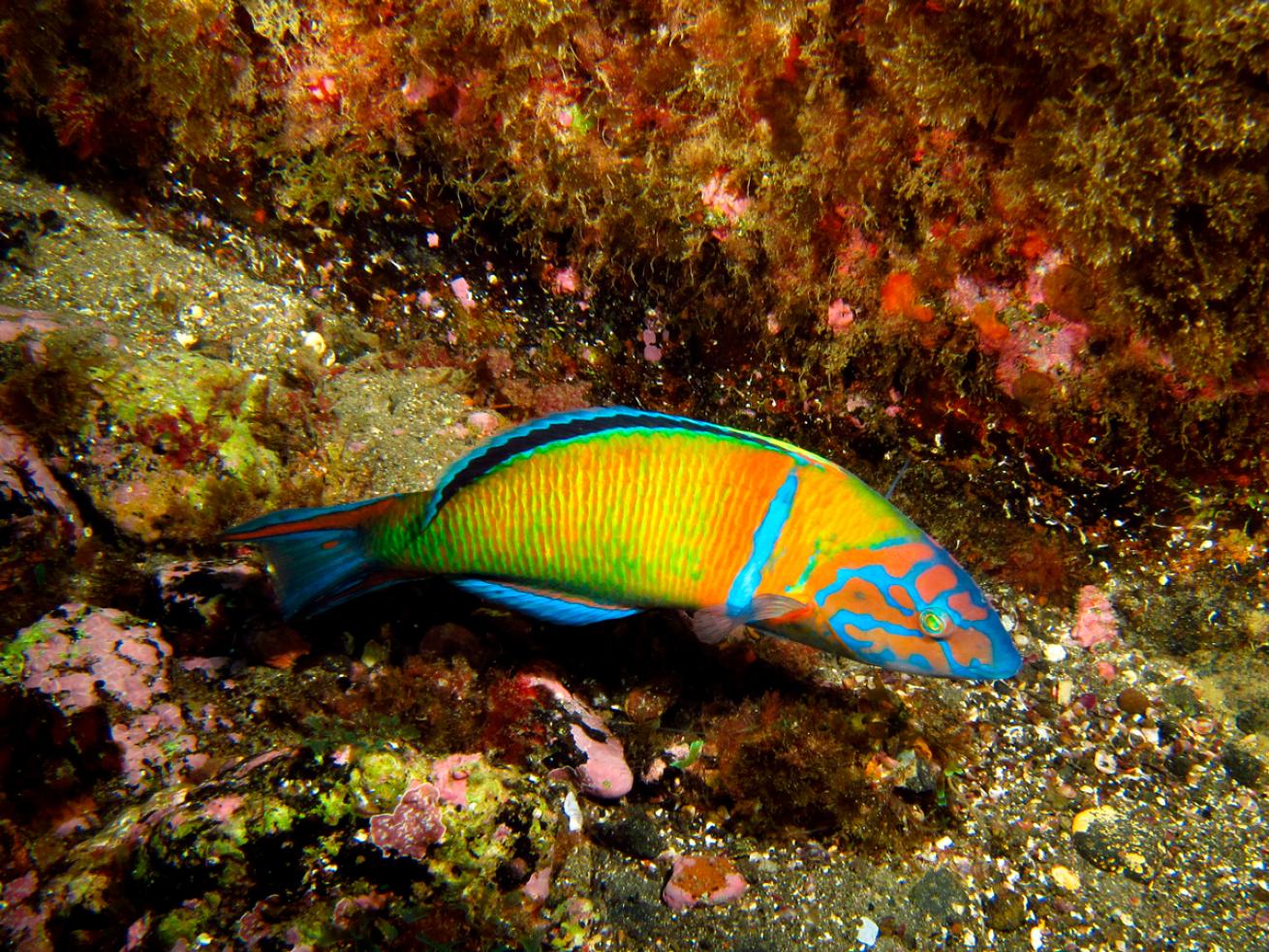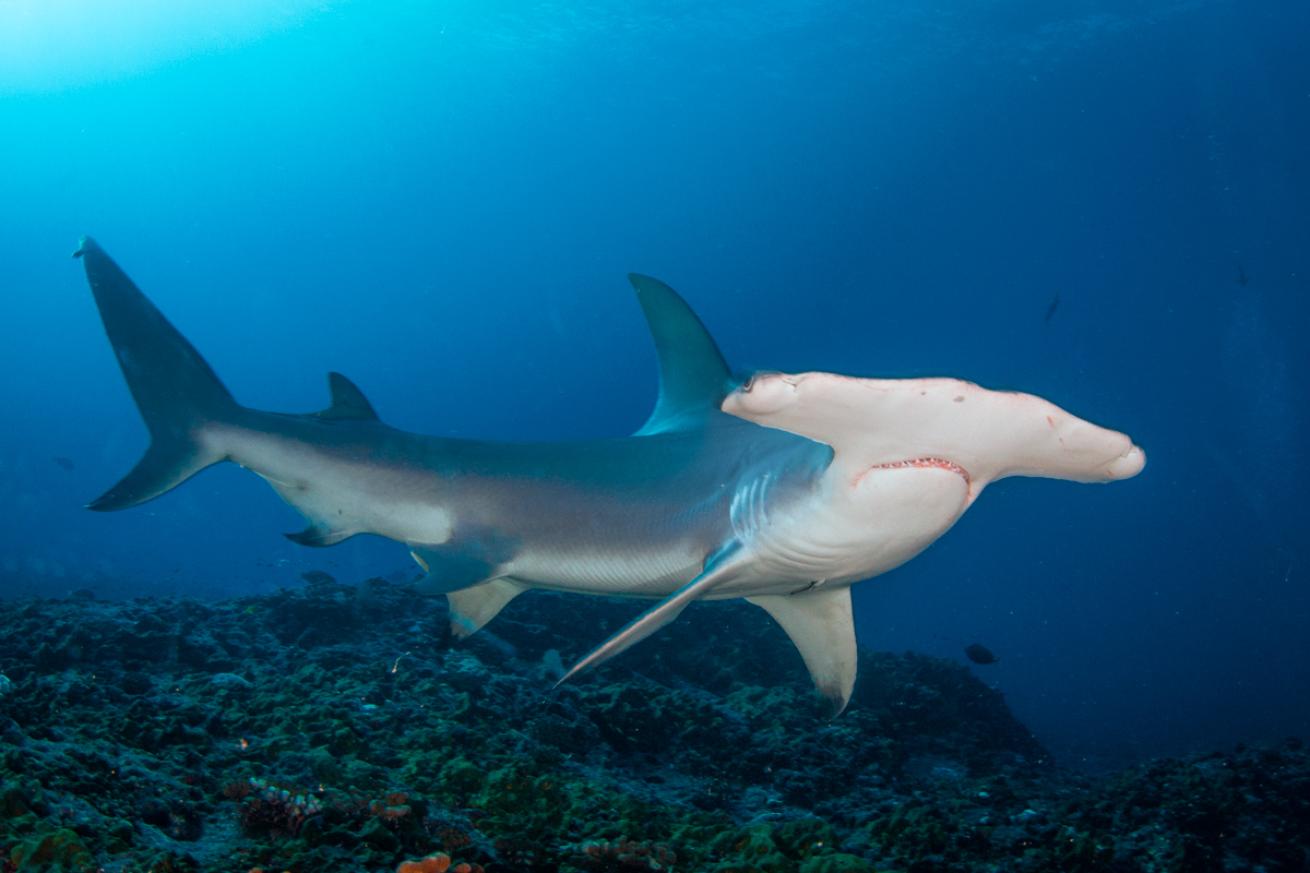Scuba Diving Hotspots for Summer 2022

Dlearyous Photography/ShutterstockAn ornate wrasse off Terceira, part of the Azores archipelago.
Planning a trip to one of these dive hotspots? Here’s what you need to know. Featuring insight from locals, tips for timing seasonal experiences, and the scoop on favorite dive sites, as well as some lesser-known sites you’ll want on your radar too.
Portugal
Under the Radar
Ana Claudia Ferreira, of Flipper Divers, points to the Berlengas archipelago, offshore from the surf town of Peniche, as a real surprise. “Most people diving here for the first time finish by saying they can’t believe it’s an Atlantic Ocean dive in Europe,” she says, referring to how full of marine life these islands are. Highlights at sites like Parede Rabo de Asno include coral walls covered with red gorgonians and shoals of silvery whiting. Currents often bring pelagics feeding along the wall too.
The Classic Dive
Ocean Revival, in Portugal’s storied Algarve region, is Europe’s biggest artificial reef and home to four decommissioned Portuguese naval vessels turned major underwater attraction. The park can be dived by anyone with adequate training. But Nuno Oliveira, of WeDive, a shop in Lagos that dives here every day, suggests both technical and recreational divers head out with a local guide to get the most out of the experience.
Dive Report
Bruno Sergio, of Best Spot Azores, says dives in the Azores have been delivering their usual wonders at classic sites like Ilhéus das Formigas, where the local marine life is “similar to that of the Mediterranean Sea, but far fishier.” Bermuda sea chub, gray triggerfish, amberjacks, wrasse and grouper have all been clouding the ocean here of late—with mobulas, whale sharks and blue sharks also making occasional appearances on classic Azores dives.
Plan a Trip
The global diving community will gather on the scenic Tróia Peninsula, south of Lisbon, for the second edition of Diving Talks, an international dive show scheduled this year for October 7 to 9. Among the explorers, scientists and divers invited to share their passion and knowledge as speakers during the event is Xavier Méniscus, who holds the record for the deepest cave dive (286 meters). “Tróia is a beautiful location to tack on some tourist time before or after the show,” says Arlindo Serrao, of Portugal Dive. “It’s a gigantic sand dune with the Atlantic Ocean on the west and the Sado Estuary Nature Reserve to the east, with pine forests all around.”
Second-Time Visitor
Divers who make it to Portugal’s nine-island offshore archipelago, the Azores, tend to opt for land-based diving for their first visit. The second time around, consider heading out on a liveaboard charter aboard Water & Wind, a catamaran that visits iconic dive sites like Ambrósio and Dollabarat. For topside travels in mainland Portugal, Serrao says not to miss the Alentejo region, a less-frequented alternative to busier Algarve that’s known for its incredible wines and postcard villages of whitewashed homes.

Don Mammoseu/ShutterstockA resident primate in Grenada’s Grand Etang National Park.
Grenada
Under the Radar
Sandals Grenada dive shop manager Devon Boota says the dive site Fisherman’s Paradise, off the southwest of the island, hardly gets the recognition it deserves. He describes it as a natural kaleidoscope of colors flushed with vibrant corals. “Thousands of tropical fish and an abundant number of turtles, eagle rays and larger animals like sharks all call this special reef home,” he says.
The Classic Dive
Grenada’s most legendary dive is the wreck of the Bianca C., a roughly 600-foot-long cruise liner that sank in 1961 near a beautiful reef, earning the nickname “the Titanic of the Caribbean.” Resting in about 135 feet of water, the site is considered an advanced dive and a good bet for spotting eagle rays, turtles, octopuses and many other species of fish and corals.
Dive Report
“The visibility has been great, and the currents are mild, making for really great conditions,” says Tom Geer, divemaster and owner of Aquanauts Grenada. On recent dives, he says, his groups have enjoyed finding all sorts of macro life in Flamingo Bay, as well as watching a 7-foot-long moray eel hunt on the wreck of the Veronica L., a 130-foot cargo ship that’s a popular night dive.
Plan a Trip
During late summer and onward, manta rays, eagle rays and stingrays are often seen in the waters around Grenada, Geer says. And when conditions are calm, it’s a good chance to get out to the island’s Atlantic wrecks with more consistency too. “Bottlenose dolphins have also been known to use our waters for migration during the month of September as they head back south as northern waters get cooler,” says Boota, who has seen them by the hundreds at this time of year.
Second-Time Visitor
“Grenada’s topside is just as beautiful as her ocean,” Geer says. He recommends packing your hiking shoes so you can take on the challenging trails in Grand Etang, the island’s rainforest. You can also go whitewater rafting along the Balthazar River and learn about Grenada’s history as a spice island at cooperatives where nutmeg is processed and sold.

Kristina Vackova/ShutterstockA great hammerhead shark on a dive in Rangiroa.
French Polynesia
Under the Radar
Fakarava’s south pass, Tumakohua, tends to steal the atoll’s underwater spotlight with its reliable wall of gray sharks, often amassing by the hundreds. But the north pass, Garuae, delivers consistent wow moments too—and with a much shorter boat ride from the main population center. The Alibaba canyon here teems with hundreds of fish and sharks thanks to plenty of current, says Sebastien Jolivet, dive shop manager of Topdive Fakarava.
The Classic Dive
Rangiroa’s Tiputa Pass, one of the major atoll passes of the Tuamotu Archipelago and the stuff of legend among divers, is known for its conveyor belt of marine life (mantas, hammerheads and all manner of schooling fish) as well as sightings of resident bottlenose dolphins. “It’s an incredible experience and an amazing drift dive,” says Yannick Wagner, of Topdive Rangiroa.
Dive Report
“In May, we were witnessing gray sharks reproducing in Tiputa Pass, a seasonal event that happens every year,” Wagner says. “We also encountered a lot of swordfish on one dive. It was amazing!”
Plan a Trip
Tahiti’s new Dive the Treasures online campaign highlights lesser-known dive destinations in French Polynesia, including the islands of Maupiti and Raiatea. Beautiful underwater videos pair with topside highlights in a guidebook-like format that makes it easy to plan your next dive vacation. If you’ve always dreamed of seeing humpbacks underwater, mark your calendar for July to November, when they come to calve in the waters off Raiatea and Moorea.
Second-Time Visitor
Raiatea, in the Society Islands, is often overlooked in lieu of destinations like Moorea, Bora Bora and the Tuamotu Islands. But visitors who make it here are rewarded with great diving on the Nordby wreck and in Teavapiti Pass, which is very fishy and makes for easier diving than the famous Tuamotu passes thanks to less current, says Julien Durie, of Hemisphere Sub Raiatea.










